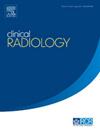非全职培训能否预测 FRCR 考试成绩?
IF 2.1
3区 医学
Q2 RADIOLOGY, NUCLEAR MEDICINE & MEDICAL IMAGING
引用次数: 0
摘要
在过去十年中,国家医疗卫生服务机构中全日制以下(LTFT)受训人员的比例一直在稳步上升。迄今为止,评估他们研究生培训成果的数据还很少。我们的目的是评估在英国皇家放射学院院士(FRCR)考试中,与全日制学员相比,LTFT学员的成绩是否存在群体差异。对2014年至2021年期间参加FRCR第一部分考试(1785人)和第二部分考试(1435人)以及2018年至2021年期间参加第二部分考试(745人)的英国受训人员进行回顾性队列研究,并对相关社会人口学变量进行分析。卡方检验评估了LTFT培训、初级医学学位地区、年龄和性别与考试成绩之间的单变量关联。多变量回归分析检验了调整其他变量后与 FRCR 成绩的关系。在研究期间,3.0%(55/1,785)的第一部分考生是LTFT,相比之下,10.0%(75/745)的第二部分考生和13.2%(190/1,435)的第二部分考生是LTFT。女性和 34 岁以上的受训者更有可能是长期外科医生(P<0.05)。在对其他变量进行调整后,LTFT 受训者通过 2A 考试(OR:0.51, CI:0.30-0.89)和 2B 考试(OR:0.55, CI:0.38-0.80)的几率几乎只有后者的一半。此外,还观察到 FRCR 通过率与种族、考试年龄和主要医学学位所在地区之间存在显著关联。在对其他人口统计学因素进行调整后,LTFT学员在FRCR 2A和2B考试中的通过率较低。英国皇家医学院和培训项目应探讨造成这一奖项差距的原因,并考虑在全国和地方范围内努力促进这些受训人员在培训中的公平性。本文章由计算机程序翻译,如有差异,请以英文原文为准。
Does training less-than-full-time predict performance at the FRCR exams?: a UKMED cohort study
Aim
The proportion of less-than-full-time (LTFT) trainees in the National Health Service has been steadily increasing over the past decade. To date, there has been a paucity of data assessing their postgraduate training outcomes. We aimed to evaluate whether LTFT trainees show group-level differences in performance at the Fellowship of the Royal College of Radiologists (FRCR) exams, relative to their full-time counterparts.
Materials and methods
Retrospective cohort study of UK-trainees attempting the FRCR Part 1 (n=1,785) and 2B (n=1,435) examinations between 2014 and 2021, and the 2A examination between 2018 and 2021 (n=745), with linked sociodemographic variables. Chi-square tests assessed univariate associations between LTFT-training, region of primary medical degree, age, and gender, with exam performance. Multivariate regression analyses examined associations with FRCR performance after adjusting for other variables.
Results
During the study period, 3.0% (55/1,785) of Part 1 candidates were LTFT, compared to 10.0% (75/745) of 2A candidates and 13.2% (190/1,435) of 2B candidates. Women and those over 34 were more likely to be LTFT (p<0.05). LTFT trainees were nearly half as likely to pass the 2A (OR:0.51, CI:0.30–0.89) and 2B (OR:0.55, CI:0.38–0.80) exams after adjusting for other variables. Significant associations were also observed for FRCR pass rates with ethnicity, age at exam and region of primary medical degree.
Conclusion
LTFT trainees have lower pass rates at the FRCR 2A and 2B exams after adjusting for other demographic factors. Royal Colleges and Training Programmes should explore the causes of this award gap and consider national and local efforts to facilitate equity in training for these trainees.
求助全文
通过发布文献求助,成功后即可免费获取论文全文。
去求助
来源期刊

Clinical radiology
医学-核医学
CiteScore
4.70
自引率
3.80%
发文量
528
审稿时长
76 days
期刊介绍:
Clinical Radiology is published by Elsevier on behalf of The Royal College of Radiologists. Clinical Radiology is an International Journal bringing you original research, editorials and review articles on all aspects of diagnostic imaging, including:
• Computed tomography
• Magnetic resonance imaging
• Ultrasonography
• Digital radiology
• Interventional radiology
• Radiography
• Nuclear medicine
Papers on radiological protection, quality assurance, audit in radiology and matters relating to radiological training and education are also included. In addition, each issue contains correspondence, book reviews and notices of forthcoming events.
 求助内容:
求助内容: 应助结果提醒方式:
应助结果提醒方式:


